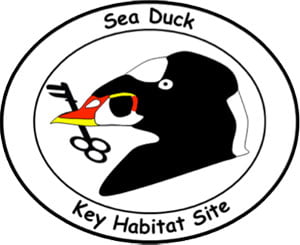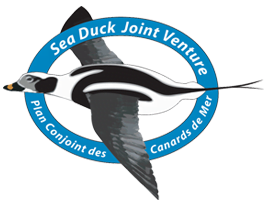Key Habitat Sites for Sea Ducks in North America

Why a Key Habitat Sites Atlas? The purpose of this atlas is to identify and document areas in North America that are essential to the welfare of sea ducks. Since 2001, SDJV partners have completed many surveys and studies of sea ducks that have provided information on the distribution and abundance of sea ducks throughout the year, and throughout North America. This information, until now, has not been consolidated or made readily available to stakeholders. We view this atlas as a first step for ensuring an adequate quantity and quality of sea duck habitat remains intact. Potential users may include conservation organizations, natural resource management agencies, industry, marine and land use planning programs, and other stakeholders.
What criteria were used to define key sites? We used the following criteria to define a “key habitat site”:
1a. The area supports at least 5% of the continental population of a sea duck species, OR
1b. The area supports a total of 20,000 sea ducks (any species) during any season,
AND
- The density of sea ducks within the area is at least 10 birds per square kilometer (detailed methods can be found here – link to methods.pdf)
The intent of these criteria was to restrict key habitat site designation to areas that are vital to sea ducks at a scale that is meaningful and practical in terms of habitat conservation and protection.
What’s available now? Partners have identified and completed narratives for more than 30 sites that meet qualifying criteria. Each site narrative includes a map, a description of the site and its importance to sea ducks, and links to supplementary material (e.g., survey data, migration maps). More sites will be added as they are documented and written up.
How do I provide feedback on what I see in the maps and narratives? We want your feedback. This document should be considered a living document that will be reviewed and revised periodically. As new information becomes available, sites currently identified here will be re-evaluated, and newly discovered sites that warrant “key sites” designation will be added. If you have comments, data, or corrections, please contact the SDJV Coordinator.
View an overview map of the sites
Download entire atlas (size… pdf)
